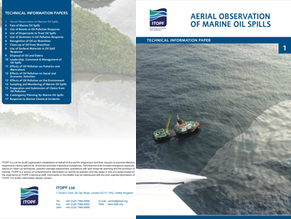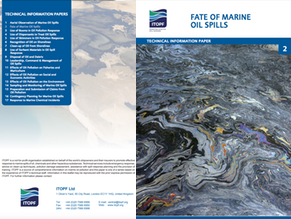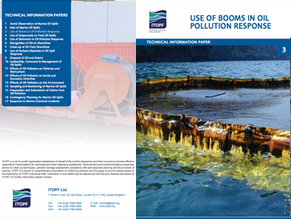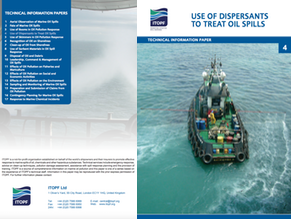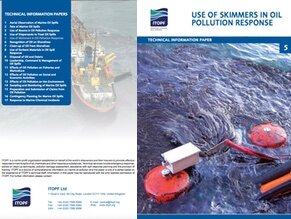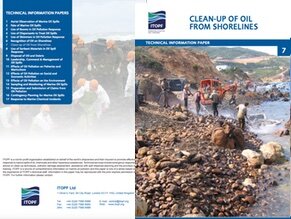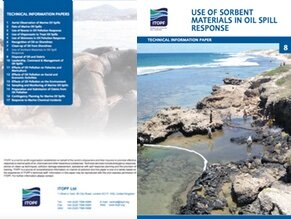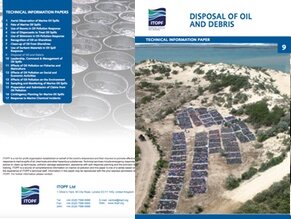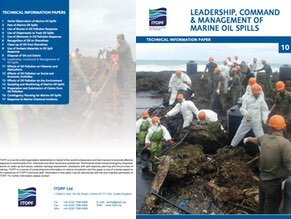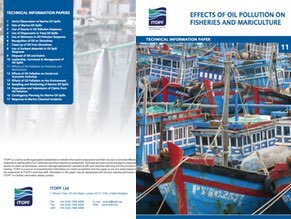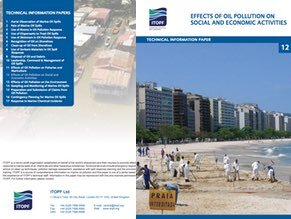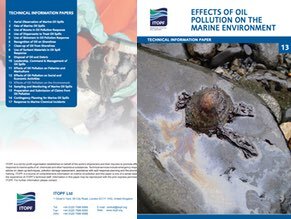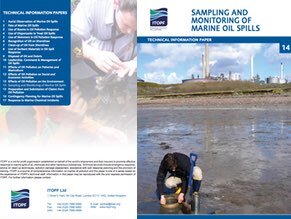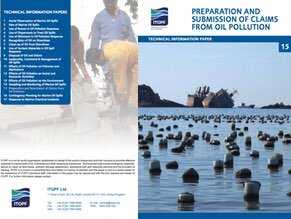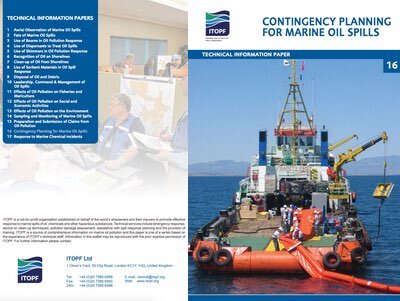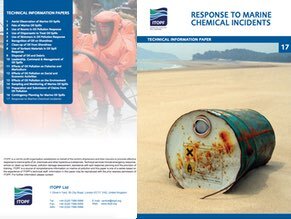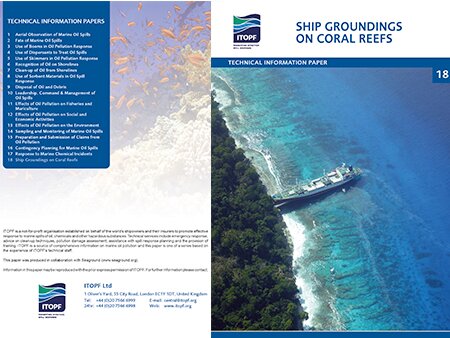Technical Information Papers
ITOPF's series of Technical Information Papers has been updated and expanded to reflect technological advances and ITOPF's more recent collective experience on a wide range of marine pollution topics.
Each paper covers a specific subject in a concise manner, illustrated with photographs and diagrams.
TIPs are available in the following languages:
TIP 01: Aerial observation of marine oil spills
This paper presents advice and guidance on conducting effective aerial reconnaissance.
Categories: Fate of Oil Spills, Response Techniques, Planning & operations, Spill Response, Technical Information Paper (TIPS)
TIP 02: Fate of marine oil spills
This paper describes the combined effects of the various natural processes acting on spilled oil, collectively known as ‘weathering’. Factors which determine whether or not the oil is likely to persist in the marine environment are considered together with the implications for response operations.
Categories: Fate of Oil Spills, Technical Information Paper (TIPS)
TIP 03: Use of booms in oil pollution response
This paper describes the principles of boom design and the two main modes of operation, namely towing by vessels at sea and mooring in shallow or inshore waters.
Categories: Response Techniques, Containment & Recovery, Planning & operations, Technical Information Paper (TIPS)
TIP 04: Use of dispersants to treat oil spills
This paper provides an overview of the use and limitations of dispersants on floating oil, as one of a range of options available for response to ship-source marine oil spills.
Categories: Response Techniques, Dispersants, Technical Information Paper (TIPS)
TIP 05: Use of skimmers in oil pollution response
This paper describes the fundamental requirements for the successful use of skimmers in the situations most likely to be encountered during an oil spill and should be read in conjunction with other ITOPF papers in this series, in particular, on the use of booms, shoreline clean-up techniques and the disposal of oil.
Categories: Response Techniques, Containment & Recovery, Planning & operations, Technical Information Paper (TIPS)
TIP 06: Recognition of oil on shorelines
In cases of large spills, the source of stranded oil may be obvious, but the question of identification frequently arises when a small amount of oil is involved and compensation is sought for damage or clean-up costs. The purpose of this paper is to assist the reader in recognising both the type and quantity of oil on differing shorelines.
Categories: Response Techniques, Planning & operations, Technical Information Paper (TIPS)
TIP 07: Clean-up of oil from shorelines
This paper describes commonly used shoreline clean-up techniques and provides advice on which are best suited to each stage of operations for a range of different shoreline types.
Categories: Response Techniques, Technical Information Paper (TIPS)
TIP 08: Use of sorbent materials in oil spill response
This paper considers the types of sorbents available and how they may be used beneficially in a response. It should be read in conjunction with other ITOPF papers in this series, particularly on the use of booms, the use of skimmers, shoreline clean-up techniques and the disposal of oil and debris.
Categories: Response Techniques, Technical Information Paper (TIPS)
TIP 09: Disposal of oil and debris
This paper explores the various options available for the management of waste material generated as a result of ship-source oil spills in the marine environment.
Categories: Planning & operations, Disposal, Technical Information Paper (TIPS)
TIP 10: Leadership, command & management of oil spills
This paper considers many of the situations encountered in a response to ship-source pollution and explains how effective leadership, command and management can maximise the success of response operations. Many of the subjects touched on are discussed in greater detail in other ITOPF papers in this series, as listed on the back cover, but in particular, the paper on Contingency Planning for Marine Oil Spills.
Categories: Planning & operations, Technical Information Paper (TIPS)
TIP 11: Effects of oil pollution on fisheries and mariculture
This paper describes the effects of ship-source oil pollution on fishing and mariculture and provides guidance on response measures and management strategies which may help to reduce the severity of oil spill impacts. Damage to other economic resources is considered in a separate Technical Information Paper.
Categories: Environmental effects, Economic effects, Technical Information Paper (TIPS)
TIP 12: Effects of oil pollution on social and economic activities
This paper considers some of the effects of oil spills on a variety of coastal industries and social activities and considers measures which might reduce their impact. Given their particular importance, the effects of oil spills on fisheries and mariculture are considered in a separate Technical Information Paper.
Categories: Economic effects, Technical Information Paper (TIPS)
TIP 13: Effects of oil pollution on the marine environment
This paper describes the effects of ship-source oil spills and resultant clean-up activities on marine flora and fauna, and their habitats. Particular attention is devoted to discussing the complex interactions between oil and biological systems, which have been the subject of diverse studies over many years. Separate ITOPF papers consider the specific effects of oil on fisheries and mariculture and on wider human activity.
Categories: Environmental effects, Technical Information Paper (TIPS)
TIP 14: Sampling and monitoring of marine oil spills
This paper provides a broad overview of the monitoring and sampling procedures that can be used for qualitative and quantitative monitoring of oil contamination. While qualitative analyses can confirm the source of oil contamination, monitoring programmes are often concerned with the quantitative changes in hydrocarbon levels over time. Guidance on analytical best practice is given and common terminology is explained. However, the techniques and observations required to monitor specific ecological or biological effects and to monitor contaminants in the air are beyond the scope of this paper.
Categories: Environmental effects, Planning & operations, Technical Information Paper (TIPS)
TIP 15: Preparation and submission of claims from oil pollution
This paper provides guidance on the information to be recorded and the documentation or other evidence required to support a claim. The process by which a claim should be compiled and submitted is also outlined. This paper is applicable primarily to spills of oil from ships although many of the points raised will be relevant to spills of oil from other sources
Categories: Compensation, Technical Information Paper (TIPS)
TIP 16: Contingency planning for marine oil spills
This paper outlines the typical format and content of contingency plans for response to ship-source spills and highlights the key steps required for an effective plan.
Categories: Planning & operations, Technical Information Paper (TIPS)
TIP 17: Response to marine chemical incidents
This paper provides an introduction to the issues involved in responding to chemical spills and addresses the range of hazards present, the behaviour of chemicals when spilt at sea and briefly reviews available response options.
Categories: HNS, Technical Information Paper (TIPS)
TIP 18: Ship groundings on coral reefs
This paper describes the effects of groundings on coral reefs and provides guidance on response strategies to reduce the severity of damage, survey techniques and restoration measures.
Category: Technical Information Paper (TIPS)

